Advertisement
In a post-Roe world, an exhibit exploring reproduction is more timely than ever
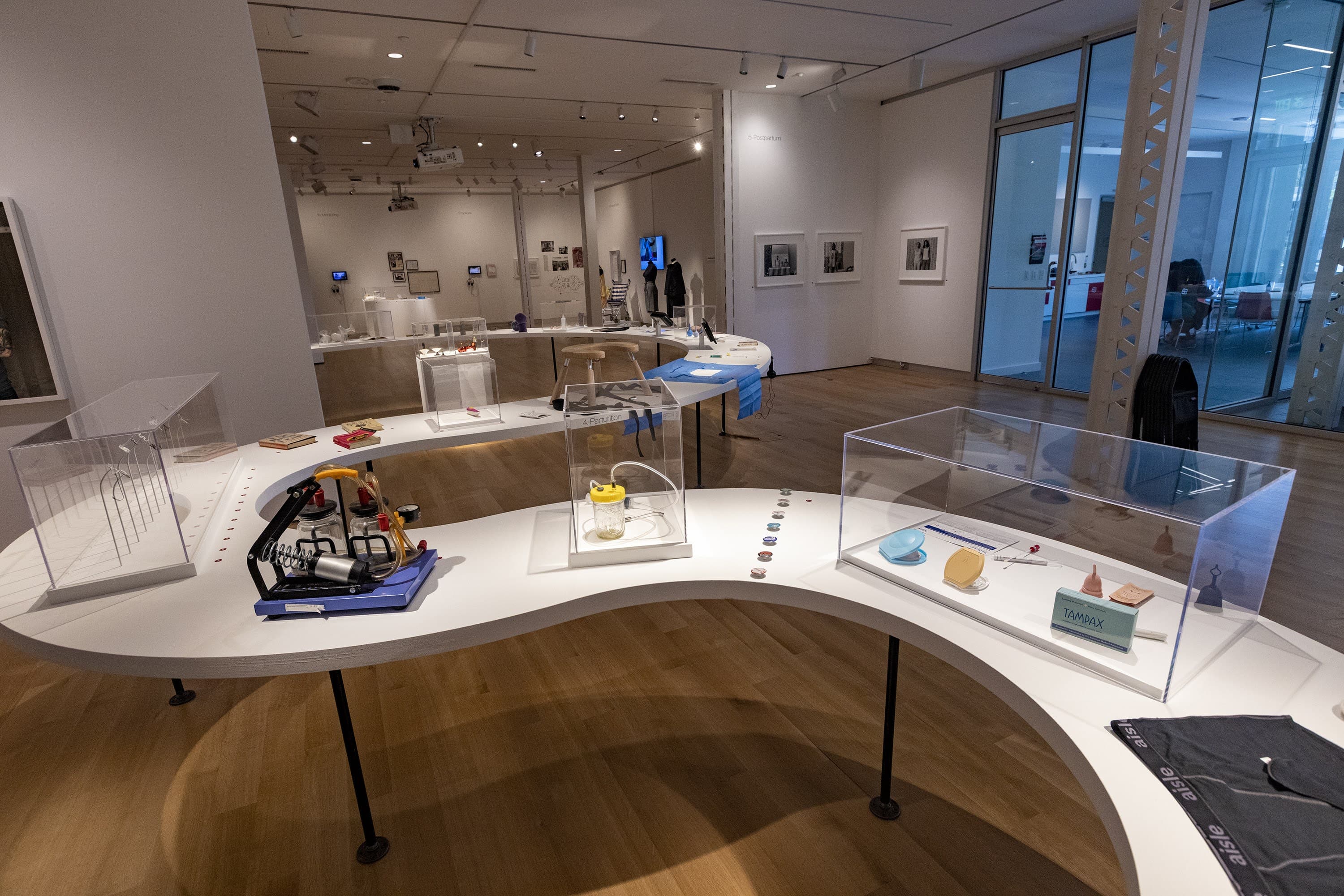
Years before the Supreme Court ruled to end federal abortion rights, a team of curators started amassing a trove that explores the history of human reproduction. Now 200 objects are on display at the Mass Art Art Museum (MAAM) in a vast exhibition that feels more urgent than ever.
Walk into the bright white gallery on Huntington Avenue and you're confronted with common inventions we don't usually see in a museum. Tampons, diaphragms, pregnancy tests, baby monitors and breast pumps are thoughtfully arranged and contextualized through the lens of design.
“Everybody gets here through birth, and this material culture is often incredibly taboo,” Michelle Millar Fisher explained. “I never found it in the design textbooks that I was taught with.”
Millions of people regularly use objects related to reproduction, but we rarely talk about them. Millar Fisher co-curated this exhibition, "Designing Motherhood: Things That Make and Break Our Births" (on view through Dec. 18), with other design historians, birth advocates, medical and midwifery experts to spark frank conversation.
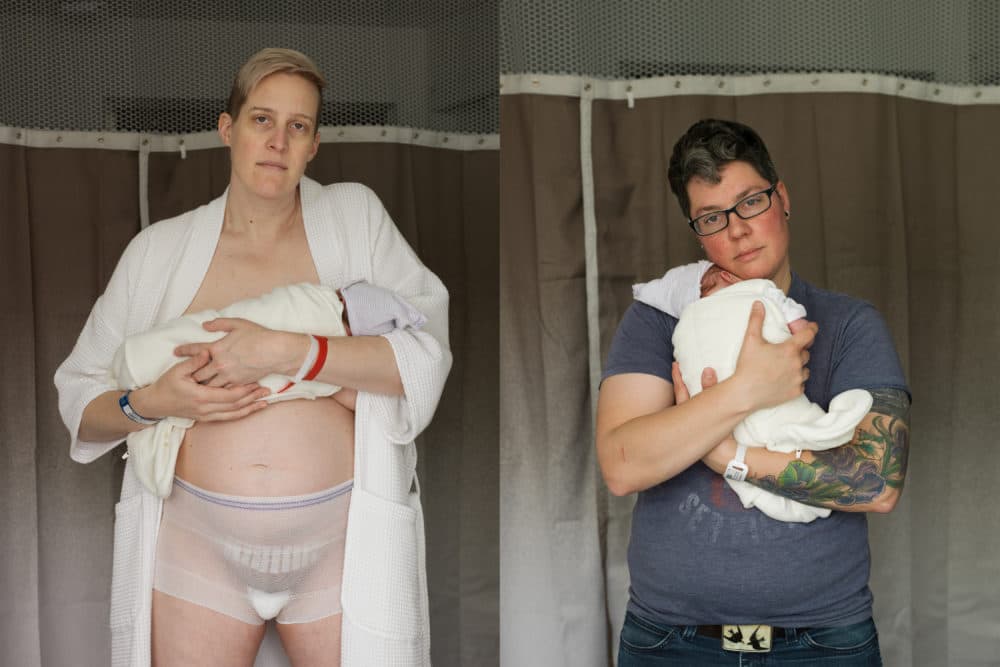
The show has been hard-won. And a long time coming. Beginning in 2017, Millar Fisher and co-curator Amber Winick tried to convince publishers to take their idea for a deep-dive book on the subject seriously. They also brought their thesis to museum directors.
“They disparaged this as a women's issue, or a niche subject,” Millar Fisher recalled. “And for us, design for the arc of human reproduction — contraception as well as conception, pregnancy, birth and postpartum — really is something that touches everybody.”
“Design objects are often asked to explain themselves in museums or exhibitions,” co-curator Juliana Rowen Barton added. “They are not necessarily considered for their beauty, or their form. We have objects of fashion and graphic design, but we also think of design as including systems, policies and technologies.”
The team's efforts paid off last year when the Mütter Museum at the College of Physicians in Philadelphia debuted the curators' collection of hidden histories. Now at MAAM, menstrual cups and IUDs are presented on equal footing with contemporary art, photography, videos, vintage books and copious amounts of painstaking research.
Advertisement
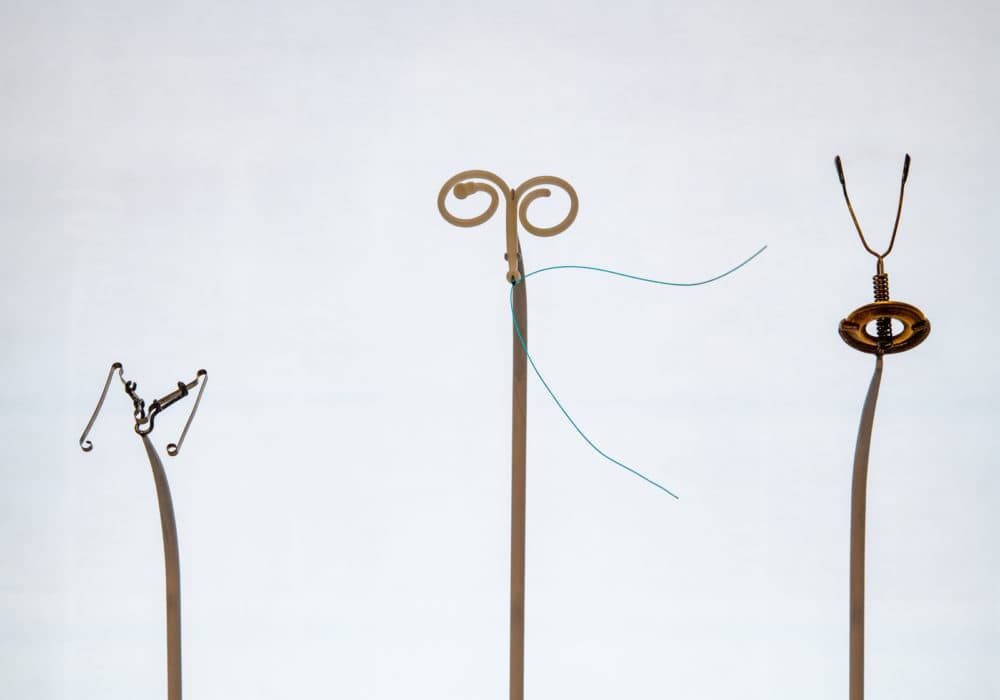
Each element, and the dialogues created between them, raise critical, emotionally-charged questions about who's designed for — and controlled — reproductive health throughout history.
“We're standing in part of the exhibition that looks at the pelvic exam and about means of reproduction,” Millar Fisher said, situating us in the show's nonlinear narrative, “and, of course, the really famous and important 'Our Bodies, Ourselves' movement that started in Boston.”
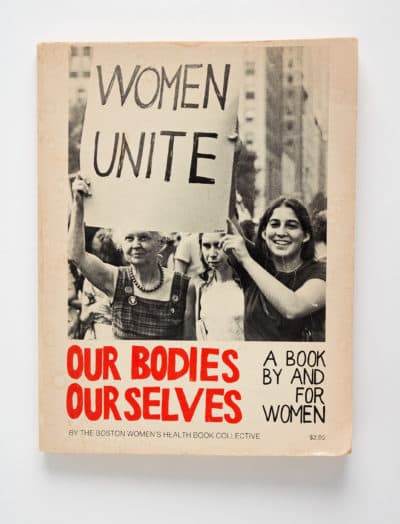
A 1973 edition of the Boston Women's Health Book Collective's self-published, feminist book speaks, in part, to how capitalism, sexuality, gender identity and medicine intersect. It's paces away from a nearby wall display holding a replica of a speculum from ancient Pompeii.
Then there's the now-iconic version designed by the notorious surgeon J. Marion Sims. He experimented on enslaved Black women in the mid-1800s and an adaptation of the Sims speculum — as it's known — is still widely used today. Millar Fisher said some modern practitioners reject that moniker and instead refer to the object as the Lucy speculum to honor one of Sims' vulnerable test subjects.
People with vaginas know how uncomfortable this rigid, cold, stainless steel instrument feels inside their bodies. But there's also a new innovation here called the Yona.
It's made of silicon and can be warmed before insertion. Miller Fisher said the two women who made it take the tool's use further.
“Like so many contemporary designers, they're thinking about the words and the processes that happen in that moment of the pelvic exam,” she said. “Both the provider and the client are being encouraged to have a conversation that is trauma-informed, that is LGBTQ informed, that really speaks to a kind of a systemic rethinking of design rather than just through a new product.”
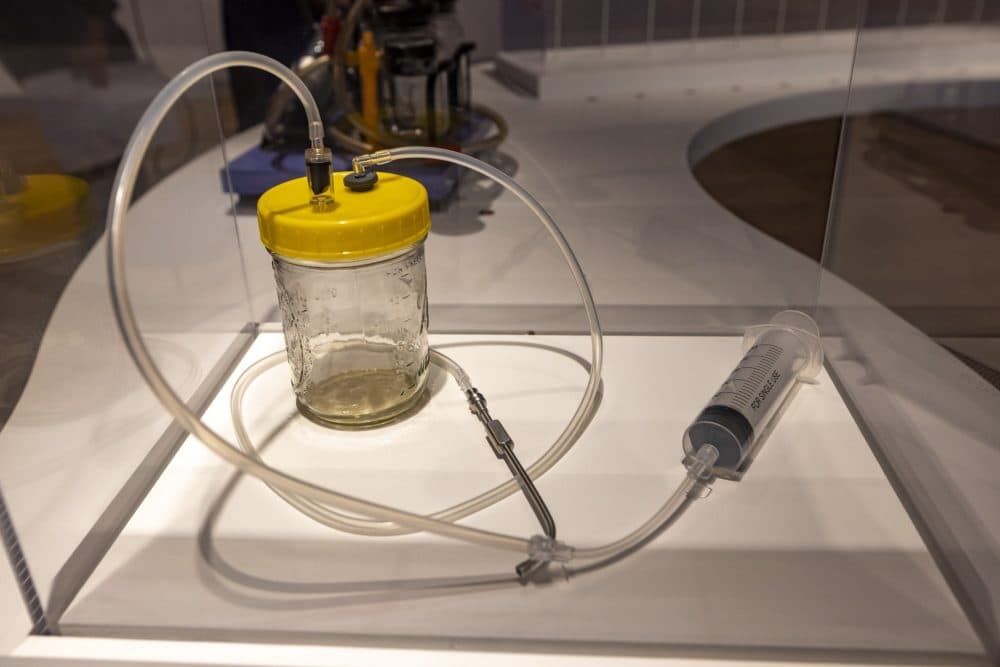
Many of the devices here are objects of agency. Millar Fisher points to a postpartum, self-exam mirror and an at-home, mail-in cervical pap smear test created in the U.K. during the pandemic. Then we stop at a humble, DIY device in a glass case. The Del-Em can be traced back to a self-help clinic in Los Angeles in the late 1960s and early '70s.
“You have a mason jar — something that would hold jam or something like that in your pantry,” Millar Fisher said, describing the vessel. Clear tubing runs from the top of a yellow, plastic lid to a basic syringe.
“These kits were made by people across the country pre-Roe v. Wade, and they were made so abortions could happen at home and in safe houses,” she said. “They were guided by women and done by women for other women who needed them. They were often done un-anesthetized — in fact, they were mostly always done un-anesthetized — so that if somebody raided the house, they could move very quickly.”
When the curatorial team tracked down this abortion kit a few years ago, they viewed it as a historical curiosity. “It now seems really terrifyingly prescient,” Millar Fisher said. “We hope that it remains under glass and that it is not something that needs to come out into circulation again.”

The show also examines larger issues surrounding the labor it takes to raise an infant and how child care gets valued — if it does at all. “It's about socioeconomic justice. It's about racial justice,” she said. “We know that there are massive racial disparities in terms of outcomes for maternal and infant health in this country.”
A glossary on the wall defines terms including medical racism, reproductive justice and even motherhood, which goes beyond gender or people who have given birth.
For MAAM executive director Lisa Tung, “Designing Motherhood” captures the fraught but also beautiful scope of human reproduction in ways only an art museum exhibition can.
“The show brings together these designs — some of them really lovely, some of them really scary,” she said. “The majority of them are designed by people without uteruses to be used on people with uteruses.”
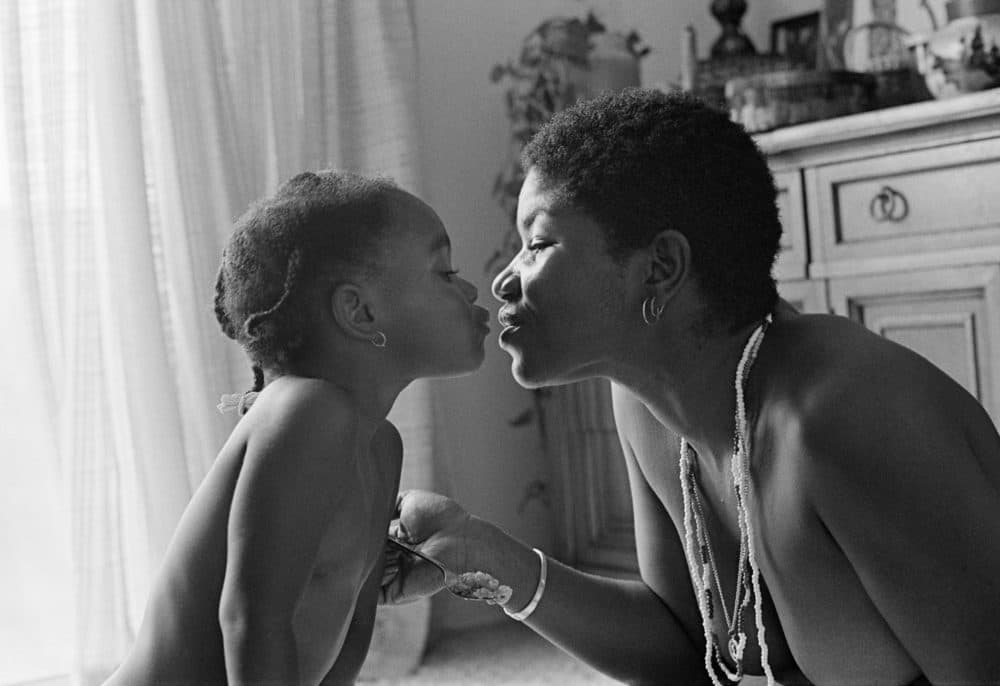
And Tung has hopes for the students who visit the galleries at MAAM, the Massachusetts College of Art and Design's teaching museum.
“We're a design school, tomorrow's designers are coming out of Mass Art,” she said, “and if they can see what's missing, and design that new thing in a humane and compassionate way, what could be better?”
In the wake of the Supreme Court's decision to end abortion rights, Tung believes MAAM's role as an institution that's also free to the public is crucial. The stakes are high, but when it comes to reproductive rights for all, co-curator Michelle Millar Fisher said they always have been.
“And if we're not paying attention, a lot of the issues that we face right now are going to be decided for us, and not by us.”
“Designing Motherhood: Things That Make and Break our Birth” will be on display at the Mass Art Art Museum through Dec. 18.
This segment aired on July 6, 2022.
